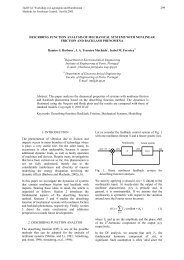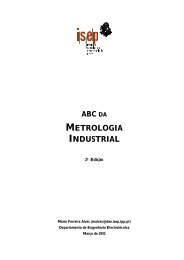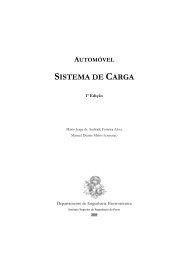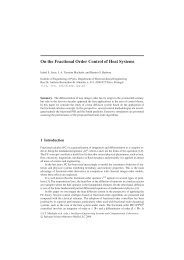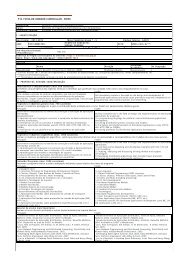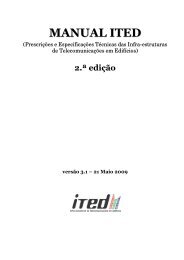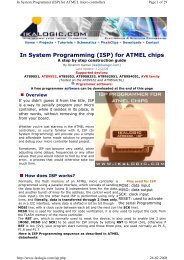AUTOMOTIVE ELECTRICAL CIRCUITS AND WIRING
AUTOMOTIVE ELECTRICAL CIRCUITS AND WIRING
AUTOMOTIVE ELECTRICAL CIRCUITS AND WIRING
Create successful ePaper yourself
Turn your PDF publications into a flip-book with our unique Google optimized e-Paper software.
The ignition circuit is actually made of two separate circuits which work together to<br />
cause the electric spark at the spark plugs. These two circuits are the PRIMARY and<br />
SECONDARY.<br />
The primary circuit of the ignition circuit includes all of the components and wiring<br />
operating on low voltage (battery or alternator voltage). Wiring in the primary circuit<br />
uses conventional wire, similar to the wire used in other electrical circuits on the<br />
vehicle.<br />
The secondary circuit of the ignition circuit is the high voltage section. It consists of<br />
the wire and components between the coil output and the spark plug ground. Wiring in<br />
the secondary circuit must have a thicker insulation than that of the primary circuit to<br />
prevent leaking (arcing) of the high voltage.<br />
IGNITION CIRCUIT COMPONENTS<br />
Various ignition circuit components are designed to achieve the functions of the<br />
ignition circuit. Basic ignition circuit components are as follows:<br />
BATTERY- provides power for the circuit. (This was discussed earlier in this chapter.)<br />
IGNITION SWITCH- allows the operator to turn the circuit and engine ON and OFF.<br />
IGNITION COIL- changes battery voltage to high ignition voltage (30,000 volts and<br />
greater).<br />
IGNITION DISTRIBUTOR- distributesignition voltage to the spark plug. Contains<br />
either mechanical contact points or an electronic switching circuit.<br />
SPARK PLUG- device that provides an air gap in the combustion chamber for an<br />
electric arc.<br />
Ignition Switch<br />
The ignition switch (fig. 2-43) enables the operator to turn the ignition on for starting<br />
and running the engine and to turn it off to stop the engine. Most automotive ignition<br />
switches incorporate four positions, which are as follows:<br />
OFF<br />
The OFF position shuts off the electrical system. Systems, such as the headlights, are<br />
usually not wired through the ignition switch and will continue to operate.<br />
ACCESSORY<br />
<strong>AUTOMOTIVE</strong> <strong>ELECTRICAL</strong> <strong>CIRCUITS</strong> <strong>AND</strong> <strong>WIRING</strong> 53/ 101




